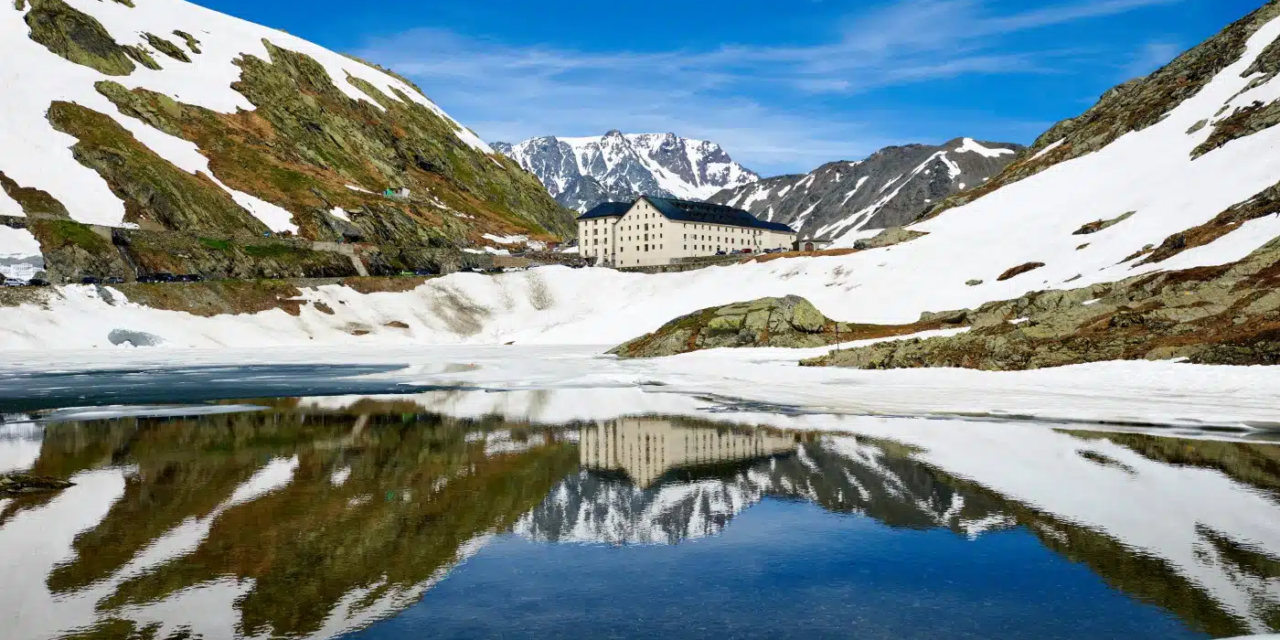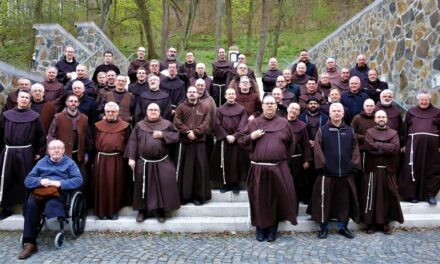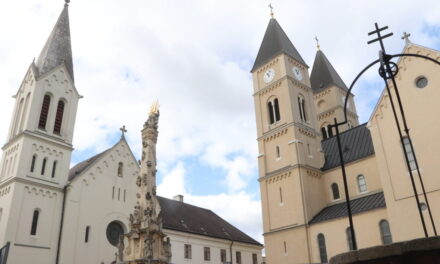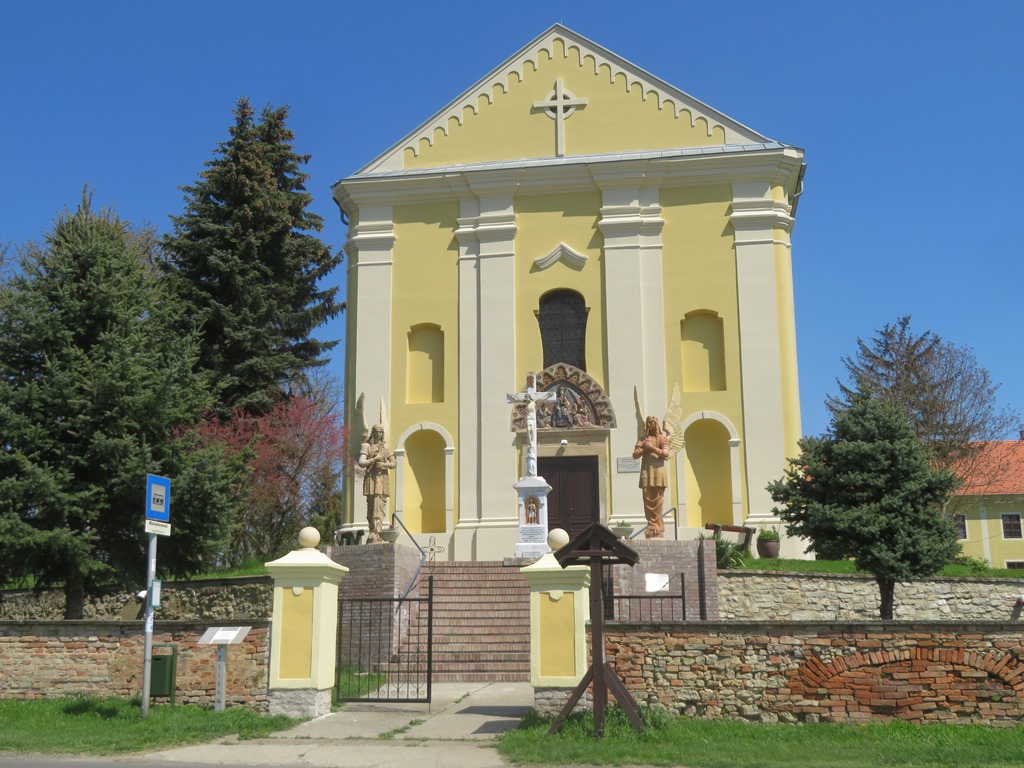Most of all, we remember St. Bernard because he took care of travelers at a time when it was only possible to cross the mountain on foot, on small paths cut through the two-meter high snow piles.
St. Bernard was born in present-day Menthon, France, at the end of the 10th century. He dedicated his life to Alpine communities and created mountain shelters that helped countless travelers safely cross the dangerous mountains of the Alps.
For many of us, winter is the time when we can finally enjoy the wonderful mountain ranges. And the faithful Catholics who go hiking and skiing here are perhaps happy that St. Bernard, the patron saint of the Alps, is watching over them.
St. Bernard, the patron saint of the Alps
St. Bernard of Menthon was born around 996 in the area of today's Haute-Savoie county. A noble life awaited him, and he was considered a great party in the highest social circles. Instead, he decided to enter the Church in the Italian Alps under the guidance of Peter, Archdeacon of Aosta.
Bernát spent years spreading the Gospel in the mountain communities, and was soon appointed archdeacon of the Cathedral of Aosta, directly subordinate to the bishop. During his long life – Saint Bernard died in Novara, Italy in 1081 – miracles and conversions accompanied him, and he was known to have played a role in resolving a conflict between nobles in northern Italy.
Accommodations that help travelers
But St. Bernard is mostly remembered because he took care of travelers at a time when you could only cross the mountain on foot, on small paths cut through the two-meter high snow piles. In 1050 St. Bernard founded a canonry and an inn at the highest point of an Alpine pass which
today known as the St. Bernard Pass, which crosses the Pennine Alps from Aosta in Italy to the canton of Valais in Switzerland.
A few years later, another inn was founded at a pass in the Graiai Alps, known as the Little St. Bernard Pass. Both accommodations operated with papal approval and under the leadership of regular canons, and their patron saint was St. Miklós Myrai, the patron saint of travelers.
The hostels provided countless travelers with accommodation and food, and medical assistance for those injured during their journey through the Alps. The canons, who also needed donations to survive, had Bernáthegy dogs as their faithful helpers.
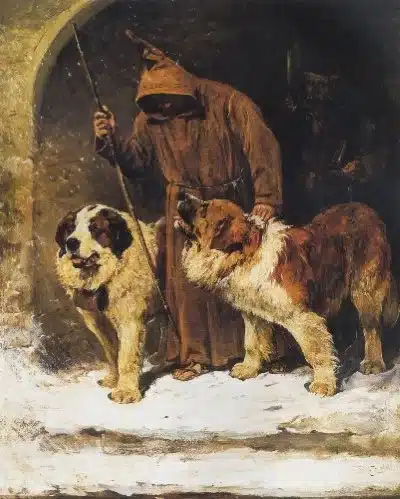
Photo: Public Domain
These large and well-balanced dogs, specially bred for the cold weather conditions of the Alps, were a great help to the canons trying to rescue travelers.
Some dogs have saved up to 40 people from avalanches in their lifetime.
The first depiction of a Saint Bernard dog was made around 1690, in a painting by the Italian painter Salvator Rosa. Today's St. Bernard dogs look different from those that saved lives in the past, as the breed was "refined" by crossing with the Molosser breeds, making them more graceful to meet the criteria of dog shows. But, as the pictures show, today's St. Bernards still wear the iconic brown and white fur of their ancestors, and their nature is just as gentle.
Nowadays, St. Bernát hostels no longer play as big a role as they did in past centuries. Those wishing to cross from Italy to Switzerland can now safely pass through the nearly 5,800-meter-long St. Bernard Tunnel, a marvel of modern technology, which is equipped with avalanche protection on both sides of the entrance and exit.
But St. Bernard still has a strong presence in the Alps. After being canonized in 1681, XI. Pius recognized him as the patron saint of the Alps in 1923, and today his patronage extends to alpine skiers, snowboarders, hikers and climbers.
Small sanctuaries associated with his name can be found all over the Alps, from France to Italy.
The St. Bernard Hospice, still operating in Switzerland at 45.86918° N / 7.17109° E, is one of the oldest mountain refuges in Europe under the management of about 35 canons.
The St. Bernard Hospice can still be visited today
To visit the St. Bernard Hospice, you must register at hospice@gsbernard.net or by calling +41 27 787 12 36. In summer it is accessible by car, but in winter it can only be reached by snowshoeing or off-piste skiing from Gignod, Etroubles, St. Oyen and St. Rhémy-en-Bosses.
Translated by Éva Marek
Source: Aleteia / katolikus.ma
Featured image: Szent Bernát Hostel / Shutterstock

